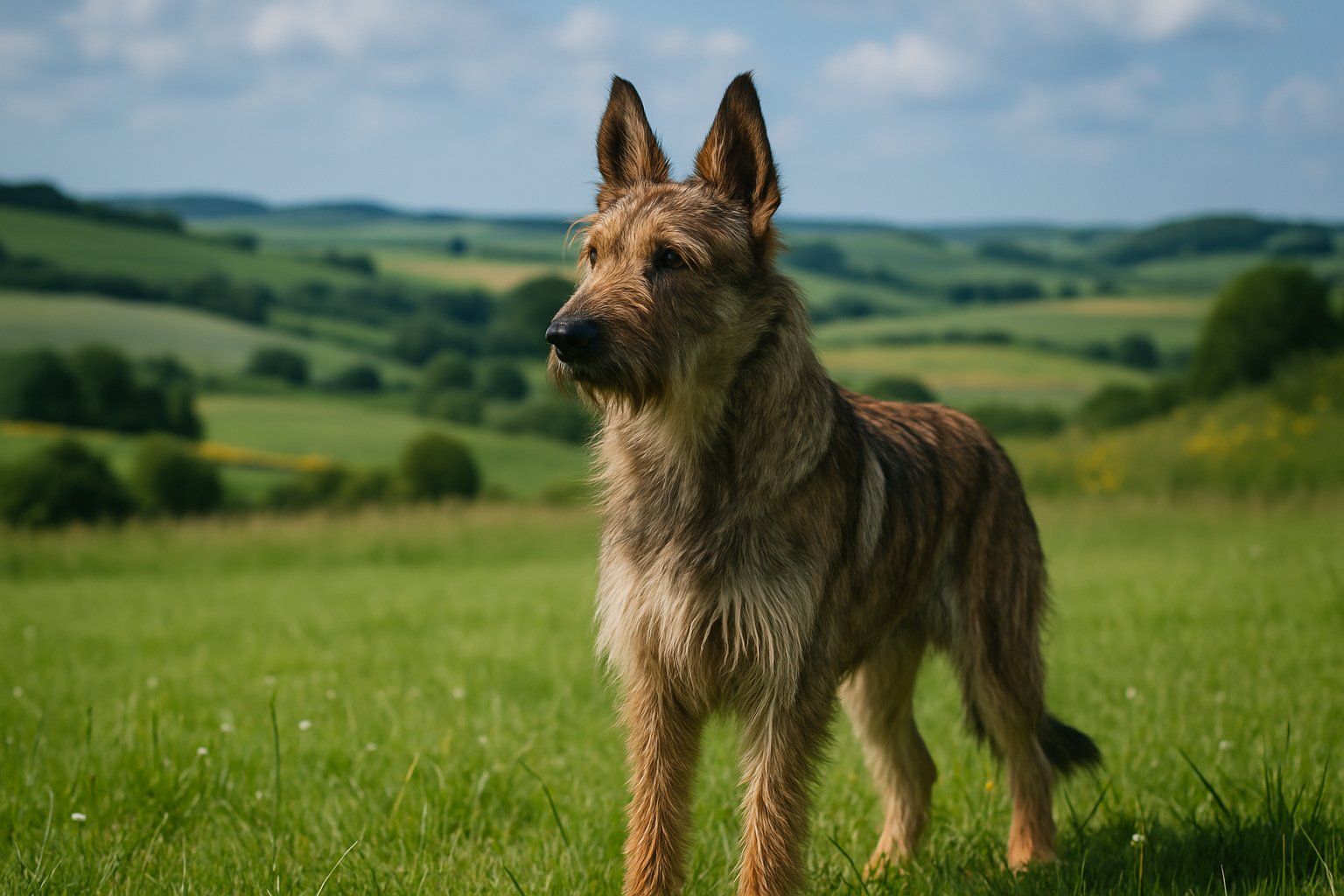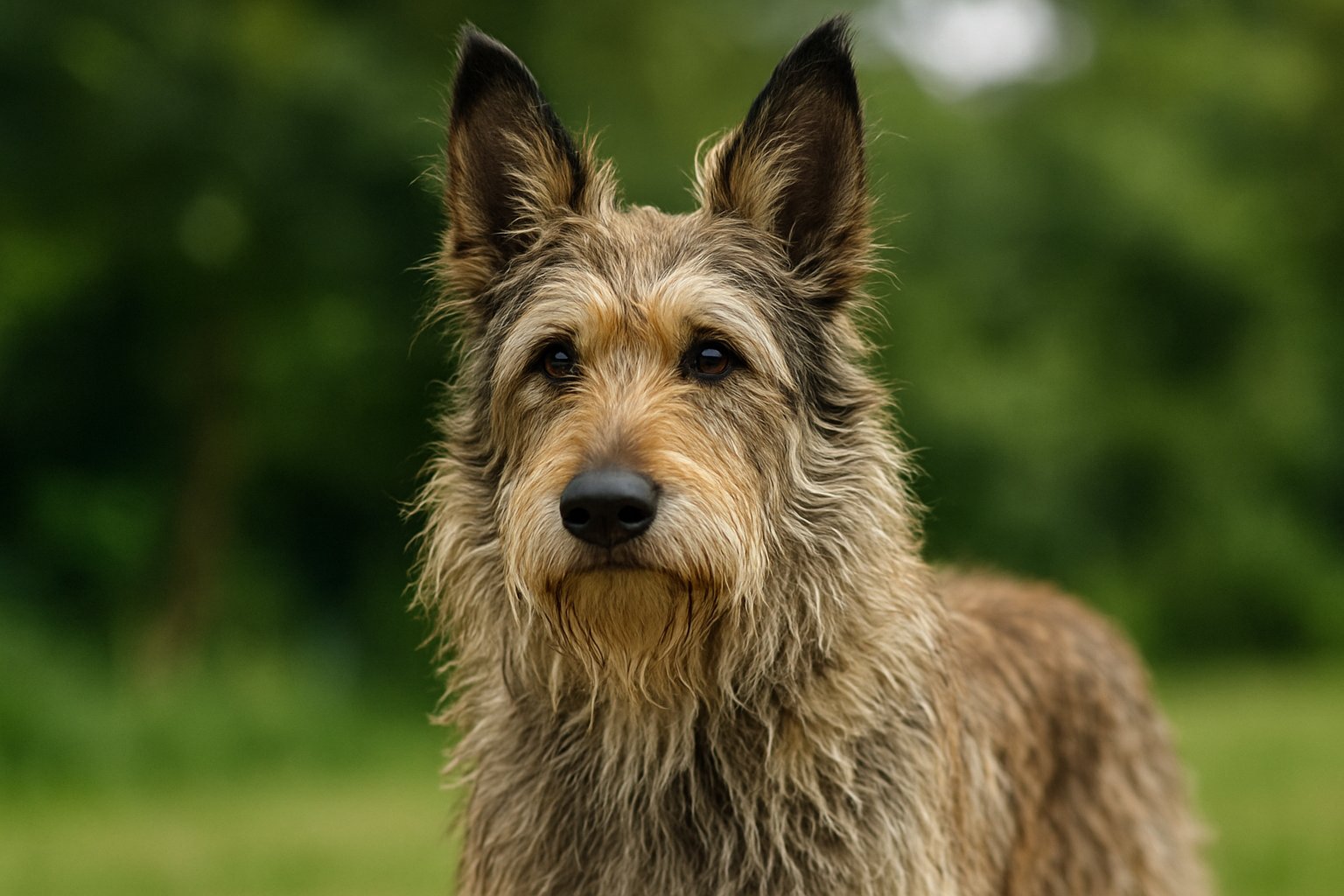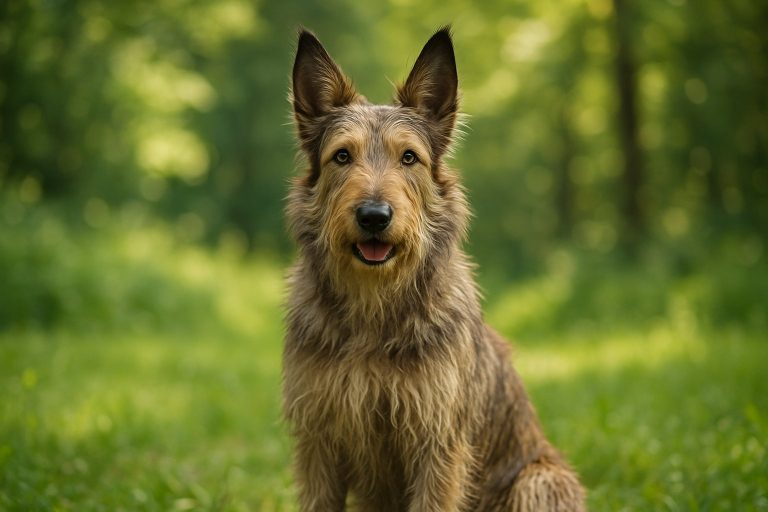If you are curious about unique dog breeds, the Berger Picard is a name you might not have heard much about. This rare French herding dog has a rich background and a lot to offer beyond its distinctive look.
Learning about the Berger Picard can show you what makes this breed stand out as a companion and working dog. Discovering lesser-known facts about the Berger Picard may help you see why some dog lovers find this breed special.
1. The Berger Picard is one of the oldest French herding dogs, dating back centuries.
- You might be surprised to learn that the Berger Picard has a long history in France. This breed’s ancestors have worked on farms in the Picardy region for hundreds of years. Their main job was herding sheep and cattle.
- The Berger Picard’s origins go back so far that people believe the breed came from early dogs like Briards and Beaucerons. This means the Berger Picard shares a common heritage with other well-known French herding breeds.
- By the 1800s, these dogs were already recognized as skilled workers. In fact, historians consider the Berger Picard to be one of the oldest French herding breeds.
- If you have a Berger Picard, you are sharing space with a breed that helped shape the history of rural France. Their deep roots and working personality are still seen in the dogs you meet today.
2. The breed is pronounced ‘bare ZHAY pee CARR,’ often mispronounced by English speakers.
- You might see the Berger Picard’s name and not know how to say it right away. The correct way to say it is “bare ZHAY pee CARR.”
- Many English speakers get the pronunciation wrong. Some say it like it looks in English, but that’s not how it is in French.
- The Berger Picard gets its name from the Picardie region in France. The French pronunciation uses softer sounds than English.
- If you want to hear it said the French way, you can listen to guides found in dog breed profiles. Learning this correct pronunciation helps you speak about the breed with confidence and accuracy.
- Knowing the right way to say Berger Picard sets you apart from most people. It also shows respect for the breed’s origins and culture, as described in breed histories like those at Modern Dog Magazine and Dog Learn.
3. Berger Picards originate from the Picardy region in northern France.
- Berger Picards come from Picardy, a region found in northern France. This area is known for its open fields and farming. For centuries, farmers in Picardy used these dogs to help manage sheep and other livestock.
- Because the land in Picardy was perfect for raising animals, the need for skilled herding dogs grew. Your Berger Picard’s ancestors worked alongside French farmers every day. Their strong herding instincts developed naturally in this rural setting.
- The breed’s name, Berger Picard, actually means “Shepherd of Picardy.” You can see this connection in both their name and their history. The Berger Picard was recognized as a unique French herding dog and even appeared at France’s first dog show in 1863, demonstrating its deep roots in the Picardy region.
- Even now, Berger Picards remain linked to this northern France area. Their background as farm dogs is still reflected in their hardworking nature and loyalty.

4. They have a distinctive rough, wiry coat that requires minimal grooming.
- The Berger Picard is easy to recognize by its rough, wiry coat. This coat is thick and has a harsh texture, which helps protect your dog from tough weather. It usually comes in fawn or brindle colors and gives your Berger Picard a rugged, natural look.
- You don’t need to spend much time grooming their coat. Regular brushing once a week will help keep their fur looking neat and remove dirt or loose hair. You won’t need to trim or clip their coat to maintain its texture.
- The wiry fur of the Berger Picard rarely mats or tangles, making mess and buildup less likely if you keep up with the basic care. Their coat is designed to be easy to maintain and to keep the dog comfortable in various conditions.
- Baths are only needed occasionally, usually when your Berger Picard gets especially dirty. Their coat naturally resists dirt and protects their skin. This makes them a good choice if you want a dog that won’t need lots of time at the groomer.
5. The Berger Picard is considered a rare breed with a limited global population.
You might not see the Berger Picard very often. This breed is considered rare, with relatively few dogs found around the world. The Berger Picard’s small numbers are partly due to its history. The breed came close to disappearing after both World War I and World War II. Even today, it is not common and is on the rare side compared to other dog breeds.
6. These dogs are happiest when actively working or engaged in herding tasks.
- If you own a Berger Picard, you’ll notice they like having a job to do. Their background as herding dogs in France means they naturally want to be busy and take part in daily activities.
- When you involve your Berger Picard in herding, agility, or other types of work, you help them use their natural skills. This keeps them mentally sharp and physically fit. These dogs do best when they can practice tasks that match their instincts.
- Leaving a Berger Picard without enough to do often leads to boredom or unwanted behaviors. They need regular challenges and tasks. Many similar breeds also thrive when given a clear purpose, and you can read more about dogs that need a job to stay at their best.
7. They need a lot of daily exercise due to their high energy levels.
If you own a Berger Picard, be prepared to give them plenty of physical activity every day. This breed was developed for herding, so high energy is built into their nature. A short walk will not be enough for them. They need longer walks, runs, or play sessions to stay happy and healthy. Without enough exercise, they may get bored or restless.
8. Berger Picards are known for their sharp intelligence and quick learning ability.
If you want a dog that is quick to pick up new skills, the Berger Picard may be a good choice for you. This breed stands out for its sharp mind and ability to learn commands fast. Many owners find that training sessions with a Picard can be very productive. You might notice that your Berger Picard is eager to solve problems. These dogs often enjoy activities that make them think, like puzzle toys or herding games. Their intelligence also makes them excel in different dog sports and activities.

9. They were featured in the 2005 movie ‘Because of Winn Dixie,’ increasing their recognition.
- You might recognize the Berger Picard if you have seen the movie “Because of Winn-Dixie.” In this 2005 film, the main dog character is played by a Berger Picard. This is a French herding breed known for its shaggy coat and upright ears.
- The movie introduced the Berger Picard to many people across the United States. Before this role, most people had never heard of the breed. After the film’s release, there was more interest in Berger Picards as family pets.
- The film’s story follows a girl named Opal and her dog, Winn-Dixie, in a small Florida town. The real dog actor was a Berger Picard, which helped show the breed’s friendly and intelligent nature. You can read more about the movie and its use of this rare breed in Because of Winn-Dixie (film).
- If you are interested in unique dog breeds, the Berger Picard’s role in “Because of Winn-Dixie” marked a turning point for their visibility in North America. Though still rare, more people began to recognize them after seeing their performance on screen.
10. The breed is not officially recognized by some major kennel clubs until recently.
You may be surprised to learn that the Berger Picard was not always a well-known breed outside its homeland of France. It took a while for this herding dog to gain attention from international canine organizations. For decades, Berger Picards were known more in local circles than on the global stage. Major kennel clubs in other countries were slow to recognize the breed. The process for official recognition usually requires a breed to have a stable population, a distinct standard, and a community of breeders. The Berger Picard did not meet these requirements until fairly recently.



